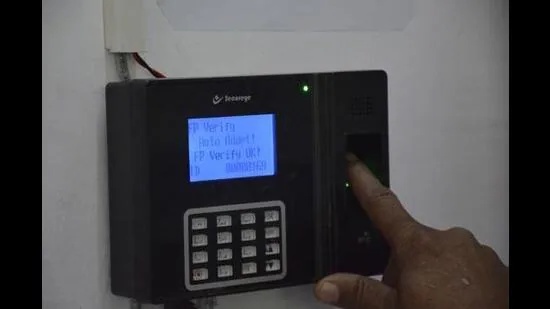
Enhanced Security Measures for Central Government Employees
The Ministry of Home Affairs (MHA) has mandated the issuance of biometric-enabled smart cards for all central government employees relocating to the newly constructed CCS-3 building. This initiative aims to bolster security protocols by replacing outdated identity cards with advanced authentication systems. The new smart cards, integrated with biometric data, will grant access to the building, which houses multiple ministries and departments under MHA’s security umbrella. Officials emphasize that the transition is critical for maintaining stringent security standards, as the old identification cards will no longer be valid. Employees, including contractual workers, must submit biometric details for card issuance, ensuring seamless entry to the secured premises.
Smart Card System to Replace Traditional ID Cards
The implementation of the biometric smart card system marks a significant upgrade in administrative security. According to Dev Gupta, president of the Central Secretariat Service Forum, the new cards will replace existing identity cards and incorporate the Aadhar Enabled Biometric Attendance System (AEBAS). This technology will authenticate entry for government officers, enhancing both security and operational efficiency. Previously, biometric data was used solely for attendance tracking within individual offices, but the new system will synchronize these details with the smart cards for real-time access control. Gupta also highlighted concerns regarding seating arrangements in the Central Vista, urging the government to address discrepancies with prescribed norms.
Implementation Process and Employee Requirements
Employees are required to complete an online form, submit recent photographs, and visit designated MHA offices for biometric authentication. The process ensures that all personnel, regardless of their employment status, transition to the new system promptly. The MHA’s internal communication explicitly states that the smart cards are essential for accessing the CCS-3 building, which is under its security jurisdiction. The move underscores the ministry’s commitment to modernizing administrative procedures while ensuring robust security measures. Officials stress that the new cards will streamline entry processes and reduce potential vulnerabilities associated with traditional ID systems.
Ministries and Departments in the CCS-3 Building
The CCS-3 building accommodates nine key ministries and departments, including the Ministry of Home Affairs (North Block), Ministry of External Affairs (South Block and Shastri Bhawan), and the Office of the Principal Scientific Advisor (Vigyan Bhawan Annexe). Other entities such as the Ministry of Petroleum and Natural Gas, Department of Personnel and Training, and Ministry of Small & Medium Enterprises are also housed there. This centralized setup aims to improve coordination and operational efficiency. The MHA’s initiative to implement biometric access control reflects a broader effort to enhance security across government facilities, ensuring that only authorized personnel can enter sensitive areas.
Broader Implications for Government Security
The shift to biometric-enabled smart cards represents a strategic move toward digitizing administrative processes and strengthening security infrastructure. By integrating biometric data with access control systems, the government aims to mitigate risks of unauthorized entry and data breaches. The initiative aligns with global trends in securing government facilities through advanced technology. While the focus is on the CCS-3 building, the success of this system could influence similar implementations in other government offices. The MHA’s emphasis on modernization highlights its role in safeguarding critical infrastructure and ensuring the integrity of administrative operations.




